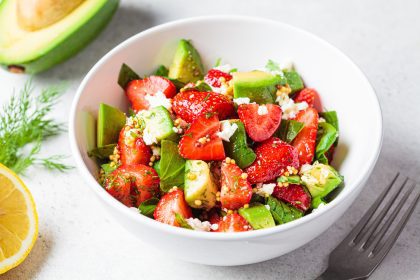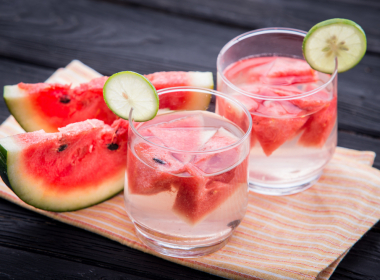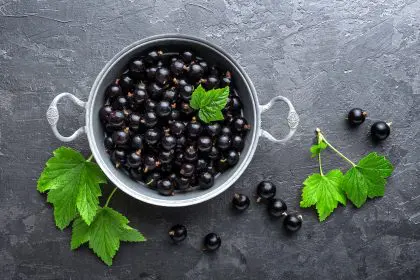Staying properly hydrated extends far beyond simply drinking glasses of water throughout the day. The human body obtains approximately 20% of its daily fluid intake from food sources, making strategic food choices an essential component of maintaining optimal hydration levels. This approach becomes particularly valuable during hot weather, intense physical activity, or when meeting daily water intake goals feels challenging.
The concept of eating your way to better hydration centers on choosing foods with high water content that also provide essential nutrients, electrolytes, and minerals that support the body’s fluid balance. These foods offer a dual benefit by contributing to hydration while delivering vitamins, minerals, and other compounds that enhance overall health and wellness.
Water-rich foods often contain natural electrolytes like potassium, sodium, and magnesium, which help the body retain and utilize fluids more effectively than plain water alone. This makes them particularly valuable for individuals who engage in physical activities, live in hot climates, or struggle with maintaining adequate hydration through beverages alone.
Understanding which foods provide the greatest hydration benefits empowers individuals to make informed dietary choices that support their body’s fluid needs while enjoying delicious, nutritious meals and snacks throughout the day.
1. Watermelon delivers maximum hydration with natural sweetness
This summer favorite tops the list of hydrating foods with an impressive water content of approximately 92%. Watermelon provides substantial fluid intake in each serving while delivering natural sugars that provide quick energy and potassium that supports proper muscle and nerve function. The high water content makes watermelon an excellent choice for post-workout hydration or as a refreshing snack during hot weather.
Beyond its hydration benefits, watermelon contains lycopene, a powerful antioxidant that gives the fruit its characteristic red color. This compound provides additional health benefits while contributing to the fruit’s appealing appearance and taste. The natural sugars in watermelon are easily digestible and provide immediate hydration benefits without the artificial additives found in many sports drinks.
The seeds and rind of watermelon are also edible and contain additional nutrients, though most people focus on the sweet, juicy flesh. Watermelon can be enjoyed fresh, blended into smoothies, or frozen into hydrating popsicles for a cooling treat.
2. Cucumber provides crisp hydration with minimal calories
With a water content of approximately 95%, cucumbers rank among the most hydrating vegetables available. These versatile vegetables offer exceptional hydration benefits while providing very few calories, making them ideal for individuals managing their weight while prioritizing fluid intake. Cucumbers also contain silica, a mineral that supports healthy skin and connective tissues.
The mild, refreshing taste of cucumbers makes them easy to incorporate into various dishes, from salads and sandwiches to infused waters and cold soups. Their high water content and crunchy texture provide satisfying hydration that can help curb hunger between meals while contributing to overall fluid intake goals.
Cucumbers contain natural compounds that may have anti-inflammatory properties, adding to their health benefits beyond simple hydration. The peel contains additional nutrients and fiber, making unpeeled cucumbers a more nutritious choice when possible.
3. Lettuce varieties offer hydrating foundation for meals
Different lettuce varieties provide excellent hydration benefits, with iceberg lettuce containing approximately 96% water and romaine lettuce offering about 94% water content. These leafy greens serve as hydrating bases for salads while providing folate, vitamin K, and other essential nutrients that support overall health.
The crisp texture and mild flavor of lettuce make it an versatile ingredient that can be incorporated into numerous dishes beyond traditional salads. Lettuce wraps provide a hydrating alternative to bread, while adding lettuce to sandwiches, wraps, and burgers increases both hydration and nutritional value.
Different lettuce varieties offer slightly different nutritional profiles, with darker greens generally providing more vitamins and minerals. However, all lettuce types contribute significantly to hydration goals while adding volume and nutrients to meals without excessive calories.
4. Celery combines hydration with satisfying crunch
Celery contains approximately 95% water and provides a satisfying crunch that makes it an appealing snack option for hydration-conscious individuals. The stalks contain natural sodium, which helps the body retain fluids more effectively than foods without electrolytes. This makes celery particularly valuable for individuals who engage in physical activities or live in hot climates.
The fibrous structure of celery requires significant chewing, which can help with satiety while providing hydration benefits. Celery pairs well with protein-rich foods like nut butters or hummus, creating balanced snacks that provide both hydration and sustained energy.
Celery leaves are also edible and contain concentrated nutrients, making them valuable additions to soups, stews, or smoothies. The entire celery plant contributes to hydration while providing vitamins A, C, and K along with folate and potassium.
5. Tomatoes deliver hydration with savory satisfaction
Fresh tomatoes contain approximately 94% water and provide natural umami flavors that make them satisfying additions to hydrating meals. The high water content combines with natural acids and sugars to create a refreshing taste that works well in both raw and cooked preparations.
Tomatoes contain lycopene, the same antioxidant found in watermelon, along with vitamin C and potassium. These nutrients support overall health while contributing to the fruit’s hydration benefits. The natural acids in tomatoes may help enhance the absorption of certain nutrients from other foods consumed alongside them.
Different tomato varieties offer slightly different water contents and flavor profiles, from cherry tomatoes perfect for snacking to large beefsteak tomatoes ideal for sandwiches and salads. All varieties contribute significantly to daily fluid intake while providing essential nutrients.
6. Bell peppers provide colorful hydration options
Bell peppers contain approximately 92% water and come in various colors that indicate different nutrient profiles. Red, yellow, orange, and green bell peppers all provide excellent hydration benefits while offering vitamin C, vitamin A, and other antioxidants that support immune function and overall health.
The crisp texture and sweet flavor of bell peppers make them appealing raw snacks or colorful additions to cooked dishes. Their high water content helps maintain hydration while their natural sugars provide energy and satisfaction between meals.
Bell peppers can be enjoyed raw with dips, added to salads for extra crunch and hydration, or incorporated into cooked dishes where they release their water content to contribute to overall meal hydration. Different colored peppers offer varying levels of antioxidants while all providing substantial hydration benefits.
7. Zucchini offers versatile hydration in numerous dishes
This summer squash contains approximately 95% water and provides remarkable versatility in both raw and cooked preparations. Zucchini can be spiralized into noodle alternatives, grated into baked goods for added moisture, or eaten raw in salads for maximum hydration benefits.
The mild flavor of zucchini allows it to absorb other flavors while contributing significant water content to dishes. When cooked, zucchini releases its water content, creating naturally moist dishes that provide hydration along with other nutrients like vitamin C, potassium, and folate.
Zucchini blossoms are also edible and contain water along with unique nutrients, though they are less commonly available. The entire zucchini plant provides hydration benefits while offering culinary versatility that makes it easy to incorporate into various meals throughout the day.
8. Strawberries combine hydration with natural sweetness
Fresh strawberries contain approximately 91% water and provide natural sugars, vitamin C, and antioxidants that support overall health while contributing to hydration goals. The sweet, juicy nature of strawberries makes them appealing snacks that provide immediate hydration benefits along with energy from natural sugars.
Strawberries contain compounds that may support heart health and cognitive function, adding to their benefits beyond simple hydration. The fiber content in strawberries helps with satiety while their water content contributes to overall fluid intake.
These berries can be enjoyed fresh, added to yogurt or cereals for enhanced hydration, or blended into smoothies that provide concentrated hydration benefits. Frozen strawberries retain most of their water content and nutrients while providing refreshing options during warmer weather.
9. Cantaloupe delivers hydration with tropical appeal
This orange melon contains approximately 90% water and provides beta-carotene, vitamin C, and potassium along with natural sugars that make it a satisfying hydrating snack. The sweet, fragrant flavor of cantaloupe appeals to many people, making it an easy way to increase daily fluid intake through food.
Cantaloupe provides natural electrolytes that help the body retain and utilize fluids effectively, making it particularly valuable after physical activity or during hot weather. The natural sugars provide quick energy while the high water content addresses immediate hydration needs.
The soft, juicy texture of ripe cantaloupe makes it easy to eat and digest, providing rapid hydration benefits. Cantaloupe can be enjoyed fresh, added to fruit salads for enhanced hydration, or blended into refreshing beverages that provide concentrated fluid intake.
10. Yogurt provides hydration with protein benefits
While not typically considered a high-water food, yogurt contains approximately 85% water and provides the added benefit of protein, probiotics, and calcium. The combination of water content and protein makes yogurt particularly effective for sustained hydration, as protein helps the body retain fluids more effectively than water alone.
The probiotics in yogurt support digestive health, which can improve the body’s ability to absorb and utilize fluids from all sources. Greek yogurt varieties typically contain less water but more protein, while regular yogurt provides more direct hydration benefits.
Yogurt serves as an excellent base for hydrating meals and snacks, pairing well with water-rich fruits to create combinations that maximize both hydration and nutritional benefits. The creamy texture and tangy flavor make yogurt appealing to many people seeking hydrating food options.
11. Soup broths deliver warm hydration with comfort
Clear soups and broths provide excellent hydration while offering the psychological comfort of warm, satisfying meals. Vegetable broths, chicken broths, and other clear soups contain high water content along with electrolytes and nutrients that support overall health and hydration.
The warm temperature of soups can be particularly appealing during cooler weather when cold, water-rich foods may seem less attractive. Soups also provide an opportunity to combine multiple hydrating ingredients, such as vegetables and broths, for enhanced fluid intake benefits.
Homemade soups allow complete control over sodium content, which is important for individuals monitoring their salt intake while still benefiting from the hydration and electrolyte benefits that properly balanced soups provide.
12. Coconut water offers natural electrolyte hydration
Fresh coconut water contains approximately 95% water along with natural electrolytes including potassium, sodium, and magnesium. This combination makes coconut water particularly effective for hydration, especially after physical activity or during hot weather when electrolyte replacement becomes important.
The natural sugars in coconut water provide energy while the electrolyte content helps the body retain and utilize fluids more effectively than plain water. The mild, slightly sweet taste appeals to many people who find plain water boring or difficult to consume in adequate quantities.
Young coconuts provide the freshest coconut water with the highest nutrient content, though packaged coconut water offers convenience while retaining most hydration benefits. Coconut water can be consumed alone or used as a base for smoothies that combine multiple hydrating ingredients.
Maximizing food-based hydration strategies
Incorporating hydrating foods into daily meal planning creates multiple opportunities throughout the day to support the body’s fluid needs while enjoying delicious, nutritious options. The key to successful food-based hydration lies in variety and consistency, ensuring regular intake of water-rich foods throughout the day rather than relying solely on beverages.
Combining hydrating foods with appropriate amounts of water and other beverages creates a comprehensive approach to maintaining optimal hydration levels. This strategy becomes particularly valuable during times of increased fluid needs, such as hot weather, physical activity, or illness recovery.
Understanding the hydration potential of different foods empowers individuals to make informed choices that support their health goals while enjoying satisfying, flavorful meals and snacks that contribute to overall wellness and vitality.


















